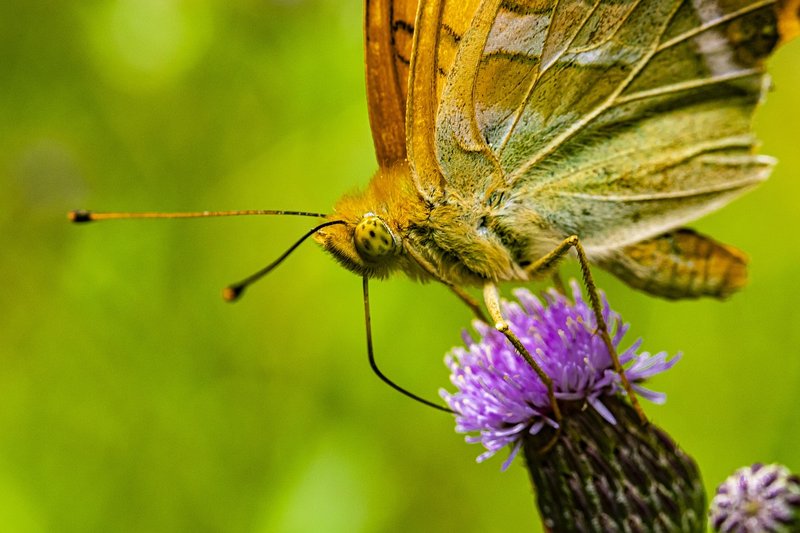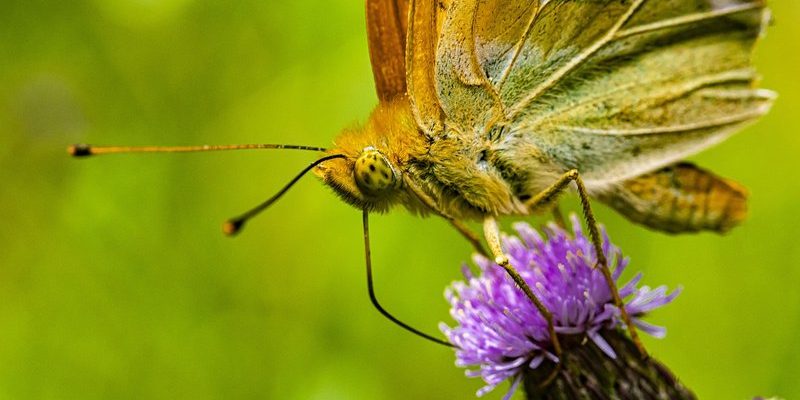
Imagine you’re enjoying a sunny afternoon in a garden filled with flowers. As you sip your coffee, you notice a butterfly gently landing on a bloom. It’s not just lounging around—this butterfly is working! While sipping nectar, it transfers pollen from one flower to another, ensuring the plant can produce seeds and fruit. It’s like a tiny, colorful gardener, making sure everything grows and flourishes. In this article, we’ll dive into the fascinating world of butterflies and explore not just their role in pollination but also the other important jobs they do.
The Importance of Pollination
Pollination is essential for the reproduction of many plants, and butterflies are some of nature’s best pollinators. When butterflies visit flowers to drink nectar, they pick up pollen on their bodies. As they move from flower to flower, they inadvertently transfer this pollen, allowing for fertilization. This process is vital for producing fruits, seeds, and new plants.
Here’s why pollination matters so much:
- Food Production: Many of the fruits, vegetables, and nuts we enjoy depend on pollinators. Butterflies help ensure we have apples, blueberries, almonds, and more!
- Biodiversity: Pollination helps maintain healthy ecosystems. It supports plant diversity, which in turn attracts a variety of wildlife.
- Economic Impact: The agricultural industry relies heavily on pollinators. In fact, many crops wouldn’t yield without them, making butterflies crucial for farming communities.
So, next time you see a butterfly sipping nectar, remember it’s not just feeding itself; it’s playing a key role in keeping our food systems running smoothly.
How Butterflies Help the Environment
Beyond pollination, butterflies contribute to environmental health in various ways. They form part of the food web, serving as prey for birds, mammals, and other insects. This interdependence helps maintain balance in ecosystems. Without butterflies, many species might struggle to find food.
Moreover, butterflies are often indicators of a healthy environment. Their presence can signal that an ecosystem is thriving, while a decline in butterfly populations might suggest environmental issues, such as habitat loss or pollution. Keeping butterfly populations healthy is not just good for them; it’s good for the entire planet.
You might be wondering how we can support these tiny helpers. Planting native flowers and reducing pesticide use can create thriving habitats for butterflies and other pollinators. Every little action counts!
The Life Cycle of a Butterfly
Understanding the life cycle of butterflies can shed light on their role in the ecosystem. Butterflies undergo a fascinating transformation known as metamorphosis, which has four main stages:
- Egg: The journey begins when a female butterfly lays eggs on specific host plants.
- Lava (Caterpillar): Once hatched, the caterpillar eats voraciously to grow, often munching on the very plant it was born on.
- Pupa (Chrysalis): After reaching a certain size, the caterpillar forms a chrysalis, where it undergoes significant changes.
- Adult Butterfly: Finally, the adult emerges, ready to spread its wings and begin the cycle anew!
Each stage is crucial for the butterfly’s development, but it’s during the adult stage that they contribute to pollination. Their lifecycle highlights the intricate connections in nature, reminding us how each phase plays a part in creating a healthy environment.
Butterflies as Natural Pest Controllers
Butterflies also help control pests—believe it or not! While they primarily feed on nectar, adult butterflies indirectly keep pest populations in check by attracting other helpful insects. For example, many butterflies attract predatory insects, like ladybugs and lacewings, which feast on harmful pests that might damage plants.
Additionally, butterflies often lay their eggs on plants that are less appealing to unwanted insects. This behavior helps ensure that plants can grow without being overrun by pests. By providing a natural balance, butterflies contribute to healthier gardens and landscapes.
Next time you’re in your garden, consider how these beautiful creatures are working behind the scenes to keep things running smoothly!
The Role of Butterflies in a Changing Climate
Climate change affects all living organisms, and butterflies are no exception. These delicate insects are highly sensitive to temperature changes and habitat loss. As their preferred climates shift, many butterfly species are struggling to adapt, leading to declining populations.
Here’s why this matters:
- Shifts in Migration Patterns: Butterflies often migrate to find suitable habitats. Climate change can disrupt their migration routes, affecting their ability to reproduce and survive.
- Impact on Ecosystems: A decline in butterfly populations can ripple through ecosystems, affecting plants, animals, and even human agricultural practices.
- Conservation Efforts: Various organizations are working to protect butterfly habitats and raise awareness about their importance. Supporting these initiatives can help ensure that butterflies continue to thrive.
By understanding how butterflies are affected by climate change, we can take steps to support them and protect our ecosystems.
Cultural Significance of Butterflies
Butterflies have long captured human imagination, symbolizing transformation, hope, and beauty across various cultures. Many traditions celebrate their significance, from poetry to art. For instance, in ancient Chinese culture, butterflies represent love and marital happiness, while Native American tribes view them as symbols of change and new beginnings.
Their beauty and grace inspire countless artistic expressions and even fashion trends. Butterflies remind us of the wonders of nature and the delicate balance of life. They also encourage us to protect the environments that give them life, fostering a sense of stewardship for the planet.
Embracing the cultural significance of butterflies can deepen our appreciation for these fascinating creatures and all they do.
How You Can Help Butterflies Thrive
Supporting butterfly populations can be as simple as making small changes in our daily lives. Here are a few steps you can take to help these essential pollinators:
- Create a Butterfly Garden: Plant native flowers that attract butterflies and provide them with nectar throughout the blooming season. Consider adding host plants for caterpillars.
- Avoid Pesticides: Chemicals can harm butterflies and their larvae. Opt for natural pest control methods to keep your garden healthy.
- Provide Water Sources: Butterflies need water just like any other creature. Create shallow puddles or mud baths where they can sip safely.
- Spread Awareness: Share what you’ve learned about butterflies with friends and family. Encouraging others to join the cause can make a more significant impact.
By taking these steps, you’re not just helping butterflies; you’re contributing to a healthier ecosystem. It’s rewarding to know you’re making a difference!
In summary, butterflies are far more than just pretty insects flitting about. They play critical roles through pollination, pest control, and environmental health. As we work to understand and protect them, we’ll also protect the ecosystems that support us. So next time you see one of these delicate creatures, remember that they are indeed small heroes doing mighty work!

